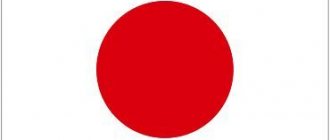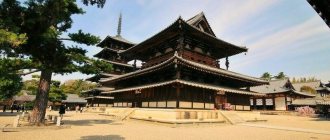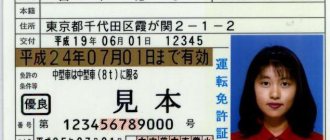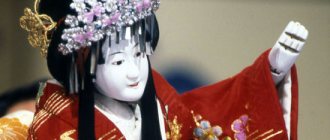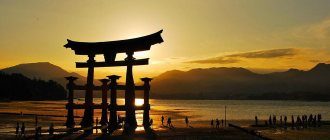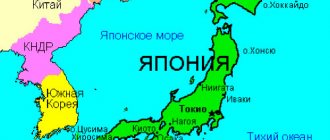The Emperor as a representative of Japanese government
Japan is headed by the Emperor, who is a representative of the imperial dynasty, recognized as one of the most ancient in the world.
In the modern world, the status of the Emperor differs significantly from its historical content. The change in status was influenced by Japan's participation in the Second World War.
A controversial issue is the status of the Emperor, due to the lack of information about the form of government in the country's Constitution. Most often, Japan is characterized as a parliamentary Salic monarchy. This approach is due to the presence of a hereditary monarch and the formation of the Government with the approval of Parliament.
The Emperor has the greatest significance in the foreign policy arena. He authorizes representatives of the country in the form of ambassadors and envoys, ratifies charters and other diplomatic documents. At the same time, foreign policy management is concentrated in the hands of the Cabinet of Ministers.
Finished works on a similar topic
Course work Public administration in Japan 470 ₽ Essay Public administration in Japan 240 ₽ Test paper Public administration in Japan 250 ₽
Get completed work or advice from a specialist on your educational project Find out the cost
Note 1
The imperial family has high authority for the Japanese.
Parliament in the Japanese government system
The legal basis for the activities of Parliament is formed by the Constitution of the country, the Law on Parliament of 1947, as well as certain regulations.
The Japanese parliament is bicameral. It consists of the House of Councilors and the House of Representatives. The first chamber consists of 252 councilors elected for 6 years. 50 percent of councilors are re-elected every three years. The composition of the second chamber includes 500 deputies elected for a term of 4 years.
The formation of Parliament is carried out as a result of general and direct elections.
Note 2
The Emperor, at the initiative of the Government, can dissolve the second chamber; such actions are not provided for the first chamber.
Have questions about this topic? Ask a question to the teacher and get an answer in 15 minutes! Ask a Question
The work of Parliament is carried out in the form of sessions, which can be of various types:
- first, regular or budget sessions. Such sessions are held once a year, usually in December. The duration of such a session is 150 days;
- secondly, emergency sessions, which are convened on the initiative of ¼ of the deputies of Parliament in emergency cases;
- thirdly, special sessions. Such sessions are held when the House of Representatives is dissolved. The duration of such a session is usually 30 days.
The work of Parliament is carried out in an open manner. If necessary, closed meetings are also held. Minutes of Parliamentary meetings are subject to publication.
The Parliament has permanent commissions, the number of which reaches 20. If necessary, non-members of parliament may be included in the commissions (if the issues under consideration require expert opinion).
Each House of Parliament has a legislative bureau, whose task is to assist deputies in the process of preparing bills.
Legislative activity forms the basis of the activities of the Japanese Parliament. The legislative initiative is divided between members of Parliament and the Cabinet of Ministers.
Parliamentary elections in 2021
Japanese political parties and political systems last participated in parliamentary elections in 2021. The liberal democratic structure of Shinzo Abe won a convincing victory, retaining the post of Prime Minister. She received more than 33% of the votes. It created a ruling coalition with Natsuo Yamaguchi's Komeito Party, which took fourth place (12.5%).
The ranking of Japanese parties currently looks like this: second place was taken by the constitutional democratic structure of Yukio Edano (19.8%), which created a pacifist coalition with the communist Kazuo Shii (fifth place - 7.9%) and the social democratic Tadatomo Yoshida ( seventh place - 1.7%).
The Party of Hope, which took third place, Yuriko Koike (17.3%) entered a coalition together with the Japan Restoration Party of Ichiro Mitsui (sixth place - 6%).
This is the current system and the main political parties in Japan that are part of the Diet today. It is noteworthy that two new structures achieved fairly good results in the elections. This is the "Party of Hope" and the constitutional democratic party.
The need to hold early general parliamentary elections was caused by the worsening Korean crisis. For this reason, Prime Minister Shinzo Ayue dissolved parliament. At the same time, the opposition believed that this was done in order to avoid investigations into the probable involvement of the head of the Japanese Cabinet of Ministers in fraud surrounding several large and influential educational organizations in the country. This is the history of Japan's parties in the 20th century.
Cabinet of Ministers in the Japanese government system
In accordance with the Constitution, the exercise of executive power is vested in the Cabinet of Ministers, which includes the Prime Minister and other ministers. When forming the Government, they proceed from the principle of a “civilian cabinet,” which implies the inclusion in the Cabinet of Ministers of persons not associated with military affairs and who are militarists.
Traditionally, the Cabinet of Ministers is headed by the leader of the party with a parliamentary majority.
As a rule, the cabinet of ministers consists of 20 ministers, most of whom are elected from members of Parliament. The approval of any member of the Cabinet of Ministers is carried out by the Emperor.
The Cabinet of Ministers is entrusted with the implementation of the following functions:
- conducting government affairs and practical implementation of legislation;
- management of the country's policy in the foreign policy arena;
- concluding agreements with prior or subsequent approval of Parliament;
- civil service management;
- formation of the state budget and submission of its draft to Parliament;
- publication of regulations within its competence;
- amnesty.
Meetings of the Cabinet of Ministers are closed and are held twice a week. Decision making requires consensus and unanimity.
The Cabinet of Ministers is headed by the Prime Minister, who is called upon to perform the following functions:
- coordinate the activities of the Government;
- appoint and dismiss ministers;
- introduce bills to parliament for consideration;
- inform Parliament regarding the state of government affairs and the country’s foreign policy;
- sign laws and decrees;
- participate in negotiations and signing of international treaties;
- lead the preparation and conclusion of government agreements.
Learn Learn
Japan's form of government is a parliamentary monarchy. The Japanese system of government is based on the Japanese Constitution. It is sometimes called the Peace Constitution because it proclaims Japan's commitment to peace and renunciation of war. The Peaceful Constitution also defines the role of the Emperor, the rights and duties of citizens, the responsibilities of the various branches of government, and other principles governing the activities of government. Japan has a democratic system of government. Every adult citizen has the right to vote and stand as a candidate in national and regional elections.
Head of State Emperor
The emperor carries out only such actions related to state affairs as are provided for by the Constitution, and is not vested with powers related to the exercise of state power. Both in the legislative and executive spheres, the emperor is deprived of independent powers and under no circumstances can act without the sanction of the cabinet. All actions of the Emperor relating to the affairs of state can only be taken with the advice and approval of the Cabinet, and the Cabinet is responsible for them. The imperial throne in Japan is passed on by succession to a member of the imperial family. Preference is given to the eldest son of the emperor. Females cannot inherit the throne. The emperor is the one whom all the people adore. And the prime minister is the one whom everyone curses. The picture shows the emperor. Twice a year he comes out to his subjects and gives an incendiary speech. The crowd is crying.
symbolic figure
The executive body in the country is the government of Japan, the Cabinet of Ministers is what the government is called in Japan. It consists of the Prime Minister, 12 ministers heading the relevant ministries and 8 ministers of state (ministers without portfolio, who are mainly advisors to the Prime Minister, they may also be entrusted with other functions). According to the constitution, at least 50% of ministers must be members of parliament. In fact, the cabinet very rarely includes non-deputies. The government is formed by parliament. First, the chamber elects a prime minister from among its members. This election must precede all other business of Parliament. In case of disagreement between the chambers on the candidacy of the prime minister, or if the House of Councilors has not made a decision on the nomination within 10 days, the decision of the lower house is considered a decision of parliament. The chosen candidate is appointed by the emperor to the position of prime minister, and at his direction the emperor appoints other ministers. The Cabinet, in accordance with the constitution, exercises executive power. Along with other general management functions, the cabinet is vested with the authority to execute laws and conduct public affairs, manage foreign policy, conclude international treaties, manage the civil service, draw up a budget and submit it to parliament, and issue government decrees. The Cabinet carries out its functions on the basis of custom: the procedure for meetings and decision-making are not regulated by written rules of law. Discussion of issues and preparation of decisions take place in secrecy; decisions are made by the cabinet by unanimity, and not by voting. Decision-making by consensus largely contributes to a more balanced and thoughtful approach and requires more careful preparation and coordination of draft documents. Japanese ministers, as a rule, are not specialists and therefore depend entirely on the competence of their subordinates. According to the 1974 amendment to the Cabinet Law, a minister can head more than one ministry or other departments, making rotation of ministers more natural and less painful for a particular minister. The real head of the ministry's apparatus is the administrative deputy minister - a professional official with special education. A minister is, first of all, a representative of the ruling party, who in his activities is most often guided by party interests, is closely associated with one of the parliamentary factions and is forced to devote most of his time not to the affairs of the ministry, but to solving party issues. Frequent turnover did not allow ministers to properly delve into the affairs of the ministry. The activities of a minister can only be subject to scrutiny by the prime minister, but such interference is a departure from generally accepted norms. As a deputy, the minister must not forget his constituents.
The legislative body of Japan is called the Diet. is the highest body of state power and the only legislative body of the state. Parliament has two chambers: the House of Representatives and the House of Councilors. Most government laws must be approved by both houses. But for some types of laws, if there is a disagreement between the houses, the decision made by the House of Representatives is accepted. The Prime Minister is a member of Parliament and is elected by Parliament. The Prime Minister appoints the Cabinet of Ministers. Most Cabinet members are heads of government ministries and departments.
Formation The right to be elected to the House of Representatives begins at the age of 25, and to the House of Councilors at the age of 30. Candidates for members of the House of Representatives must pay an election deposit of 3 million yen. The deposit is not returned if the candidate does not receive 1/5 of the votes from the quota in a given district, which is determined by dividing the valid votes in the district by the number of seats due in it. Candidates for membership in the House of Councilors must contribute 2 million yen; the amount is doubled if candidates are nominated by a list. The House of Representatives is elected for 4 years and consists of 512 people. This composition was last elected on July 18, 1993. In January 1994, a law was passed, according to which the number of members of the lower house was reduced to 500 people. This rule will apply from the next elections. To elect the House of Representatives, Japan is divided into 129 constituencies. The number of members per district varies from 3 to 5; There is one single-member constituency. Each voter votes for only one of the candidates in his district. Mandates are awarded to candidates who receive the largest number of votes, which number must be at least 1/4 of the quota obtained by dividing the valid votes in the district by the number of seats allocated to it. The House of Representatives can be dissolved early at the request of the government. The upper house - the House of Councilors - is elected in the number of 252 deputies for a period of 6 years, and every three years, 1/2 of the councilors are re-elected. One hundred and fifty-two councilors are elected from districts based on the prefectures and in the capital, according to the same system that is used for elections to the lower house, with the only difference that the candidate winning the seat must receive a number of votes equal to or greater than the number obtained by dividing the valid votes into district by the number of seats due to that district. The remaining 100 councilors are elected through a party-list proportional representation system in a national constituency. In other words, the entire House of Representatives and most of the House of Councilors are formed according to the so-called “single non-transferable vote” system, which obliges political parties to be very careful about the number of candidates nominated in the districts. Each chamber can independently elect its chairman and officers, establish its own rules of meetings, procedures and internal discipline. The Law on Parliament includes the chairman, vice-chairman, temporary chairman, chairmen of committees and the secretary general of the chamber as officials elected for the entire term of office of the chamber. Of these, only the Secretary General is elected from outside the parliament. By tradition, the deputy chairmen of the chamber receive their post from among the deputies from the opposition parties.
Judicial system in Japan The Japanese judiciary as a whole is no different from the rest of the world. The Supreme Court, consisting of 14 judges and the Chief Justice, has all powers. The chief judge is personally appointed by the emperor himself, and the cabinet of ministers approves the remaining 14 judges. Once every 10 years, judicial candidates are approved in a referendum in which the entire population of the country participates. At the same referendum, according to the voting results, one of the judges may resign. Although the voting results are taken into account, they have rather remained as a tradition, because people simply do not know the people vying for positions as judges. As in other developed countries, the Supreme Court of Japan has the power to review and, if necessary, overturn decisions of other authorities. There is a strict hierarchy of judicial power. At the top step is the Supreme Court, below are the courts of appeal, then come the small courts of local importance. People to leadership positions in local structures are appointed by the Supreme Court. The procedure is repeated once every 10 years. Regardless of the importance of the case under consideration, be it a murder case or a case of disturbing public peace, the judge makes the decision himself, taking into account only the laws and the Constitution of the country.
